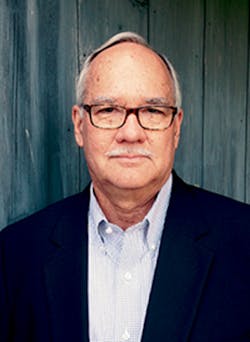The unreported story at trade shows is often what exhibitors are saying about business conditions. We rarely get out of a booth without hearing the familiar question: "What do you hear about the economy?"
That was certainly the case at this year's first trade show, Plastec West, and five other co-located shows, including MD&M West, last month in Anaheim, Calif.
About 30 equipment suppliers and processors asked me that question and most seemed nervous about the outlook. Oddly, when asked what worried them, no one identified any significant issues. Perhaps nervousness comes naturally.
Journalists have no crystal ball or special insight into the business outlook; we generally report what we are told. Here is what we have been told recently:
• Auto sales will probably be flat in 2017, but that is still at a very high level. However, some economists don't agree with the prediction of flat sales. Investment Bank Morgan Stanley says sales could rise another 2 percent to 4 percent in 2017. The automotive industry is a driving force for the plastics industry, so this is an important indicator. And even with flat sales, the amount of plastic in cars continues to grow.
• Construction spending and employment have been steadily increasing since last April and should remain strong in 2017, according to the respected 2017 Dodge Construction Outlook. It predicts 5 percent overall growth in 2017 —another plus for the plastics industry.
• Medical manufacturing could be slowed somewhat by the consolidation of hospitals and physician practices, but overall it is still a growth industry because of an aging population, an expanding global middle class and the leveraging of technology. The Society of Manufacturing Engineers predicts that 3-D technology will play a bigger role in medical device manufacturing in 2017. In its most recent Plastics Market Watch report, the Plastics Industry Association predicted the U.S. medical technology industry will grow at a 6.3 percent rate to $156 billion by next year.
• Automation has made a huge impact on the plastics industry. It has made us more productive and in many cases, it gives the U.S. a cost and quality advantage over other countries. Robot manufacturers are investing in the North American market and the number of robots and cobots will increase. Sepro, a major French manufacturer of robots, will start assembling robots in Pennsylvania later this year for processors in North America — its biggest market.
• Final 2016 North American plastics industry machinery shipment statistics are expected to be released by the Plastics Industry Association early this month, but shipments of primary machinery were up 4.7 percent for the first nine months of 2016 compared with the first nine months of 2015. Those figures are better than the Census Bureau's performance for all industrial machinery.
• Booth space sales for NPE 2018 are running about 8 percent ahead of 2015 with the official booth drawing scheduled for March 20-22. Floor space is expected to sell out for the triennial show. Companies are taking bigger booths, a sure sign of a strong machinery market and optimism.
The X factor for most of the exhibitors we talked with in Anaheim is the new administration and the policies it might pursue. They generally believe that President Donald Trump's business-friendly tax ideas will be good for them, but his trade policies might hurt. The plastics industry has benefitted from free trade agreements, which Trump railed against before he was elected.
Bill Carteaux, president and CEO of the Plastics Industry Association, said the trade group is opposed to significant changes in the North American Free Trade Agreement. He points out that the plastics industry has a positive trade balance with the 20 countries where the U.S. has trade agreements.
Carteaux is currently chairman of the Council of Manufacturing Associations within the National Association of Manufacturers. This gives plastics a front-row seat as the new administration's policies are announced and implemented.
Any barriers to trade, such as tariffs, could potentially hurt export sales for companies that ship products into the U.S. market. It is too soon to know what might happen or how machinery manufacturers would react. It is possible that more could start assembling equipment in the U.S.
Are we unnecessarily acting like a bunch of nervous Nellies? The industry started this year in a strong position. While there might be some uncertainty about what will happen in the days ahead, it is good to be starting from a position of strength.
Machinery and equipment sales follow the prosperity of processors. Processors need to get new business before they will buy a new machine or new auxiliary equipment. Consumer spending remains strong overall, so there is little reason to think processors won't get new business.
"Our business is good and is getting better," one processor said in Anaheim. "I don't see anything in the near future that will change that."
Ron Shinn, editor
About the Author
Ron Shinn
Editor
Editor Ron Shinn is a co-founder of Plastics Machinery & Manufacturing and has been covering the plastics industry for more than 35 years. He leads the editorial team, directs coverage and sets the editorial calendar. He also writes features, including the Talking Points column and On the Factory Floor, and covers recycling and sustainability for PMM and Plastics Recycling.


